Tactics for Late-Season Deer
If the unseasonably warm temps in November put a hurt on your whitetail hunting this fall, don’t give up just yet! Late season hunting can be truly incredible if you get in the right area and follow a few simple tips.
Over the years I’ve had almost better luck taking big bucks late season. They finally become a little more predictable this time of year. They need to eat and they’re run down, so brave the cold temps and get out there before the season draws to an end. You never know, late season could become your favorite time to hunt big bucks!
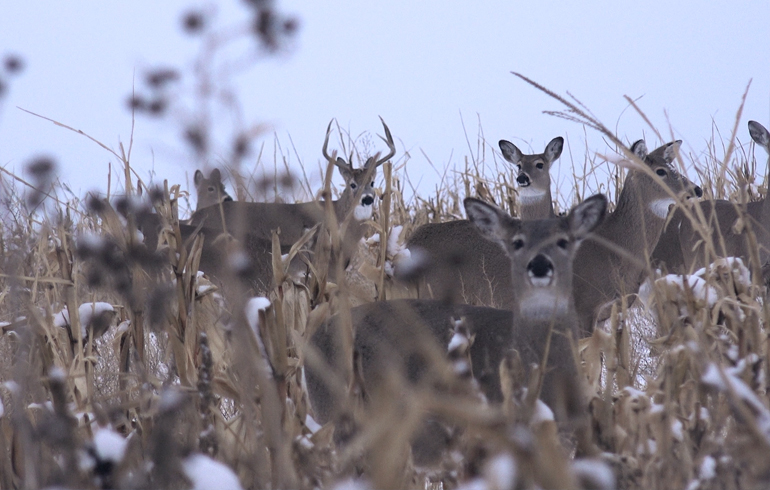
- Think Food- Most late season bucks are run down from the rut and are now have one thing on their mind; food. They need to get their weight back up and this usually means eating during daylight hours. Even if there’s no food plot or standing field on the property- look at an aerial map or drive around to see where deer may be feeding. Then figure out where they are bedding and try to intercept their travel pattern in the afternoons heading to food.
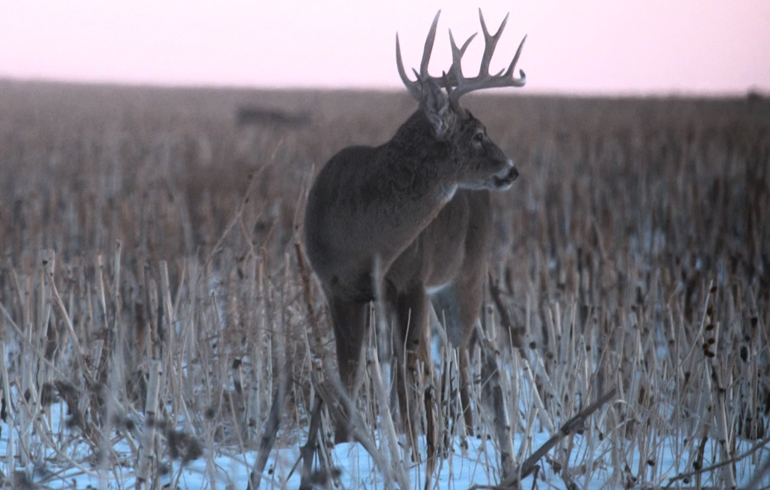
- Enter with Stealth- Most deer bed fairly close to food sources late season so take extra caution when getting on stand. Go as quietly as possible and if it’s an option, get dropped off in a ATV or vehicle. I’ve found that most deer tolerate a vehicle coming in and out of a location much better than seeing a hunter walking in, especially if they are used to farmers or ranchers in the area.
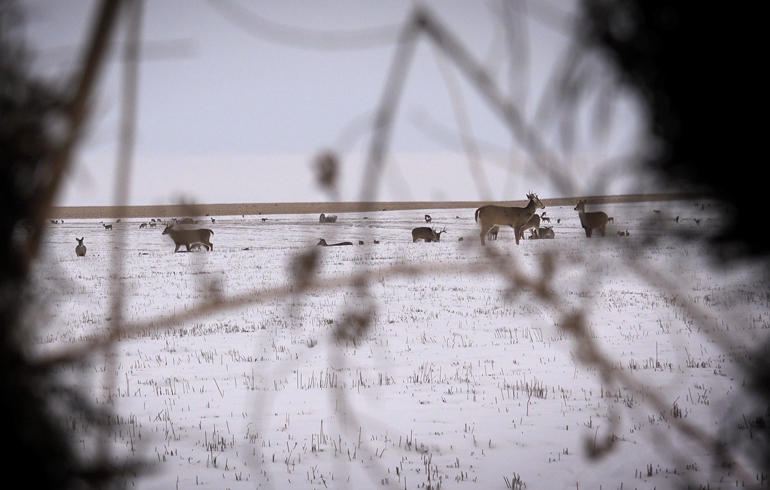
- Use Trail Cameras- Trail cameras can be a very useful tool late season as they watch food plots and tell you
exactly where bucks are entering the field. I like to put my Cuddeback’s on time-lapse mode so they trigger a photo every 10-seconds regardless if a deer walks in front of them. What this does is give me an idea of what is happening over a big area without having to be there myself. I use this information to set stands and decide which wind would be best for a specific field or stand location.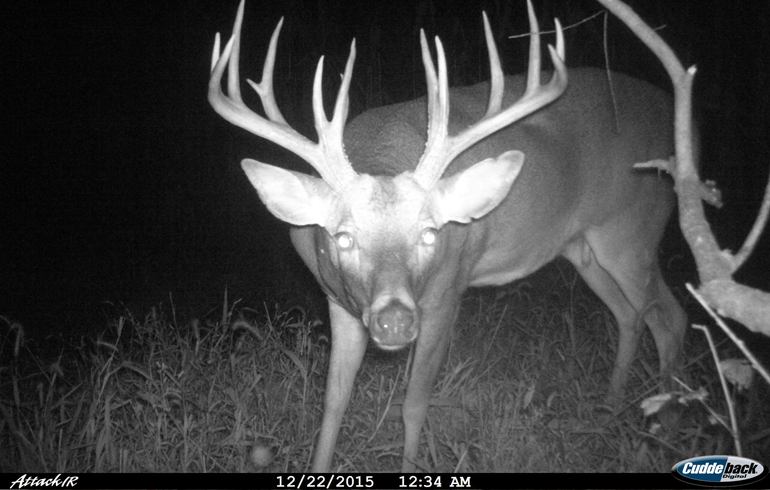
- Stay Comfortable- Late season sits can get extremely cold so limit exposure the best you can. If you have an area where a ground blind can be set up, try that over a tree stand. Blinds keep you much warmer and will allow you to stay on stand a little longer. Another great tip when the temps drop is to bring in hay and use this as a floor in your blind. The hay will keep your blind warmer and help hold in heat, plus make it very comfortable. Just be careful if you plan to use a heater as well so it doesn’t tip over and start the hay on fire!
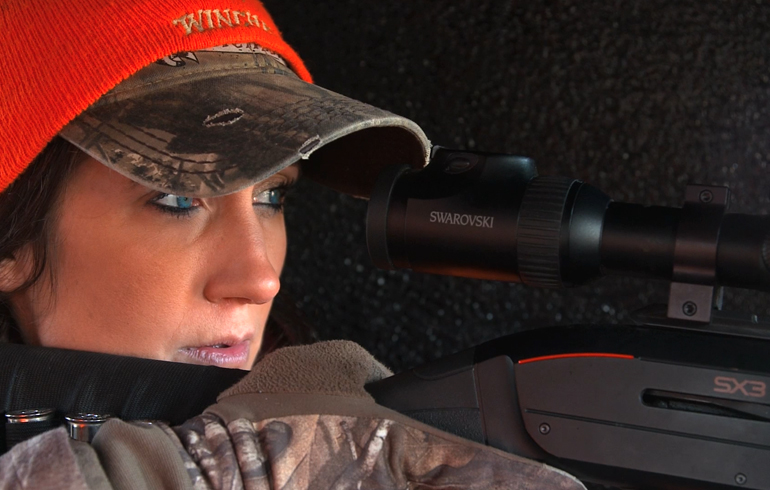
- Know Ballistics- If you’re sitting over a bigger food plot or field during late season you may run into longer shots than you would normally find in the woods or thick timber. Go online to the Winchester ballistics app and know your guns drop and wind drift inside and out. Once you study it on the app, head to the range with heavy clothes on and ensure you know what limitations are for both wind and distance. It’s important to shoot with all those bulky clothes because I’ve found it more difficult to get the correct eye relief on my scope when I have a heavy jacket on. It’s not impossible, just takes a little getting used to!
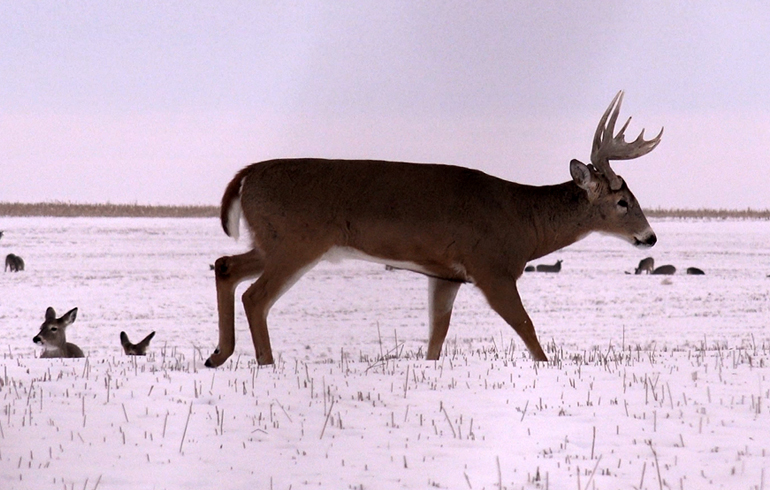
- Rattle if the Time is Right- I’ve seen a lot of late season fights between big bucks as the young fawns come into estrus later in the year. If this goes down during the hunt, use it to your advantage! I always keep a set of rattling antlers with me, even during late season just in case. If there is fighting activity around me, I’ll try to emulate a fight when there are no deer in front of my stand. I’m not a fan of rattling when there are deer within sight, but as soon as my field clears it doesn’t hurt to give it a try.
- Afternoons are Best- I’m a big fan of putting in a lot of time and hunting all day, but there’s usually no need for that late season. Mornings can be extremely difficult to get in quietly and not spook deer that are feeding on the field I’d want to sit. With this in mind, I actually switch to primarily afternoon hunts once late season kicks in. It’s not because I’m lazy or sick of hunting, it just becomes the most effective and smart way to hunt.
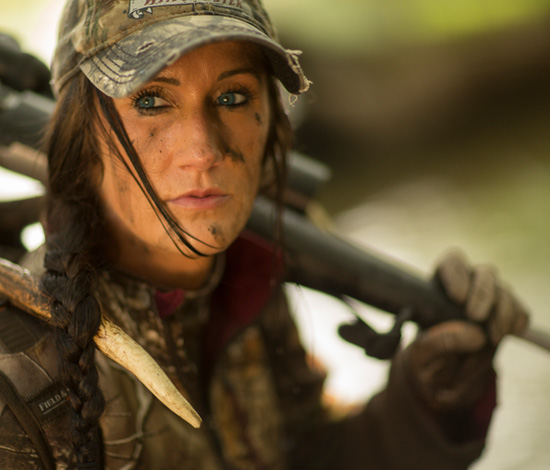
Melissa Bachman
With a degree in broadcast journalism, Melissa set sights on a career in the outdoors. Traveling over 300 days a year to shoot for Winchester Deadly Passion, Bachman considers this her “dream job.” With a love for children, industry trade shows and the great outdoors, she films around the world for her adrenaline-pumped series.



